The basic white sauces of French cuisine are the béchamel and velouté sauces. These sauces have not been around forever. Basic milk sauces date back to medieval times. Over the centuries people have figured out how to thicken and flavor milk sauces and sometimes that comes with a few possible f-ups. This is what we will help with in this guide. The f-ups and how to fix them.
We visited chef Nic van Wyk, chef and hospitality consultant, to help us solve common problems when making a white sauce.
What are béchamel and velouté sauces?
White sauce vs. béchamel sauce
Nah, there’s nothing wrong with just a normal white sauce. It’s probably not very accurate to label it as a béchamel sauce. The main difference between a classic béchamel sauce and a basic white sauce is that the liquid (milk) we use to make béchamel with, is first infused with onion, carrots, celery, peppercorns, bay leaves and mace (to mention a few options).
The béchamel sauce is more flavorful than the basic white sauce. But a well-seasoned basic white sauce will also do the thing in most contexts. According to Nic the serving of a classic béchamel sauce as the main sauce of a dish is quite rare nowadays. “Chefs do all kinds of interesting things with white sauce like making a beer cheese sauce, but you do need to understand the basics to play around with it”.
Béchamel sauce vs. velouté sauce
On the other hand, velouté sauce, also one of the five basic mother sauces of French cuisine, is sometimes even richer than the béchamel sauce. A very well-seasoned homemade stock is used as the liquid (usually chicken stock) and in some cases, it’s enriched with egg yolk and cream. It’s a beautiful velvet sauce.
All these white sauces are basically made in the same way: Equal amounts of fat and flour (roux) to thicken a liquid (mostly milk). The exact quantities of the butter and flour per cup of liquid totally depend on the preferred consistency of the end product.
How to fix a white sauce
The white sauce is lumpy
Cause: fat (butter) was too warm when flour was added; roux was not mixed well or did not cook long enough; liquid was added too quickly and not stirred enough.
Solution: Nic says to rub the sauce through a sift. You can also blend it in your food processor for about 1 to 2 minutes on high speed and heat again over low heat while stirring. Check the consistency of the sauce and add milk if necessary, says Nic.
The white sauce is fatty or butter splits from sauce
Cause: Too much fat added or roux was heated too much.
Solution: Take the pot off the stove and use a few layers of paper towel to pat sauce to absorb the fat. If that doesn’t work, start again. Nic says this is a mistake that should be avoided by cooking the roux over low temperature, measuring your fat accurately, and never exposing the sauce to too high temperature.
The sauce has a raw taste
Cause: The starch is not properly cooked.
Solution: Cook over low heat for another few minutes while stirring, taste for seasoning and add a bit salt, white pepper, and grated nutmeg if necessary.
The sauce is too thick
Cause: Ratios are wrong (too much flour) or sauce is cooked too long and too much liquid evaporated.
Solution: Whisk more warm milk or stock into the sauce, starting with just a little. Also, add more seasoning if necessary.
The sauce is too thin
Cause: Ratios are wrong (too much liquid or not enough flour) or roux is cooked too long or too short.
Solution: First try and cook it for a bit longer and see if it thickens up. If not, make a little more roux in a separate saucepan (using equal parts butter and flour). Whisk the roux into the thin sauce and cook for another 5 minutes or until the desired consistency is reached. Keep stirring.
How much butter, flour and milk to use for different white sauce consistencies
Thin sauce
15 ml butter, 15 ml flour, and 250 ml milk.
Uses: Pour over sauce for vegetables, the base for creamy soups, pasta sauce, etc.
Medium thickness
30 ml butter, 30 ml flour, and 250 ml milk.
Uses: Mostly to cover dishes like moussaka and lasagne.
Thick sauce
60 ml butter, 60 ml flour, and 250 ml milk.
Uses: the base for soufflés and croquettes
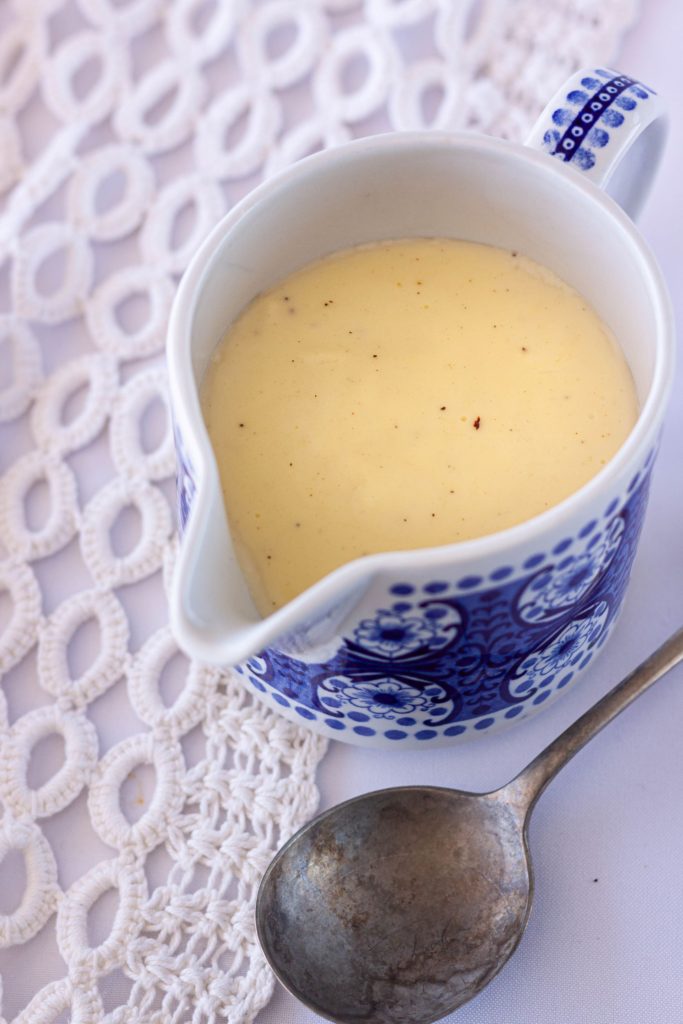
My step-by-step guide to making a classic béchamel sauce
What you’ll need
- A jug
- A small saucepan
- A whisk
Ingredients
2 cloves
½ medium onion, peeled
½ medium carrot
¼ celery stalk
2 bay leaves
1 small blade of mace (optional)
2 black peppercorns, crushed
250 ml milk
30 ml butter
30 ml cake flour
Salt
Ground white pepper
Pinch of grated nutmeg
Step 1: Infuse the milk with veggies
Press the cloves into the onion. Roughly chop the carrot and celery stalk. Add the onion (with the cloves), carrot and celery stalk into a microwave safe jug. Add the milk, bay leaves, mace (if using), and peppercorns. Bring the milk to a boil in the microwave (don’t let it boil over). Remove from the microwave and leave for approximately 30 minutes for the flavors to infuse. Strain the milk and discard the veggies. Return the strained milk back into the jug and heat in the microwave while preparing the roux.
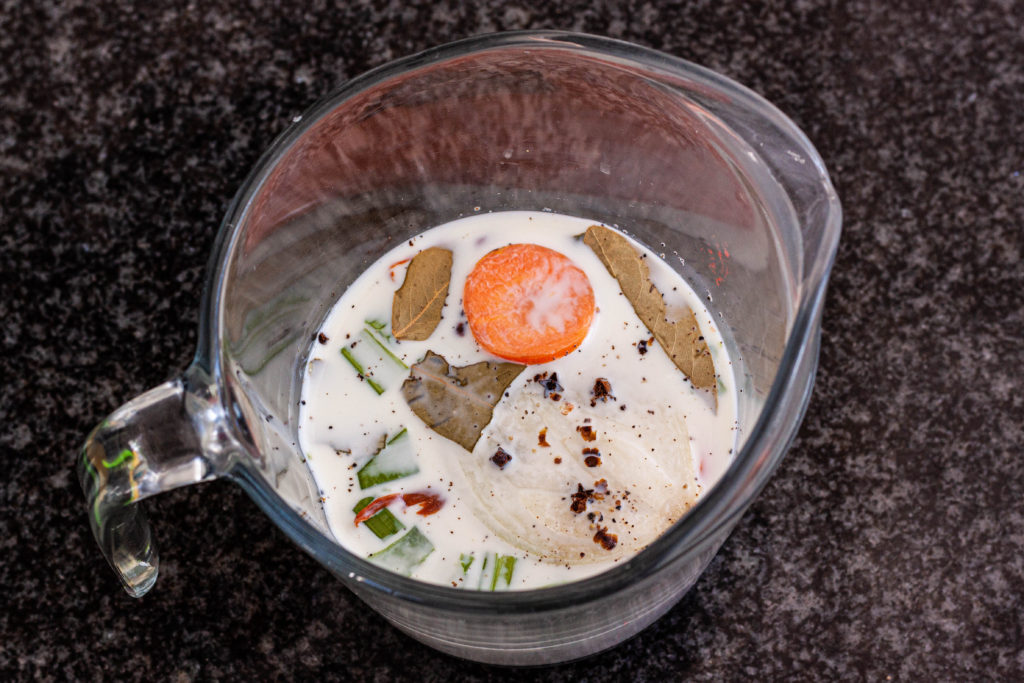
Step 2: Prepare roux and add milk
Melt the butter in a small saucepan over low heat. Do not let the butter burn or sizzle. The butter should just melt. Stir in the flour. Stir gently for 1 to 2 minutes until smooth. Add the hot milk in a stream and stir over low heat until smooth and thick. Season the sauce with salt, white pepper and freshly grated nutmeg. Simmer the sauce while stirring for about 5 minutes.
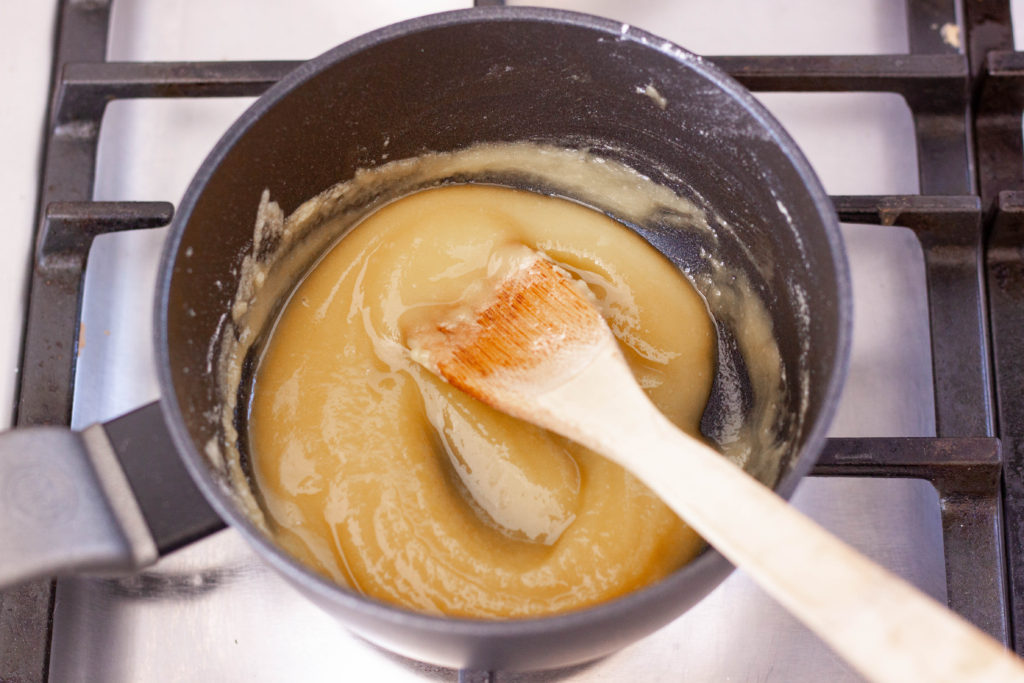
Note
To make a basic white sauce, just leave out all the veggies and aromatics to infuse the milk. Start with step 5.
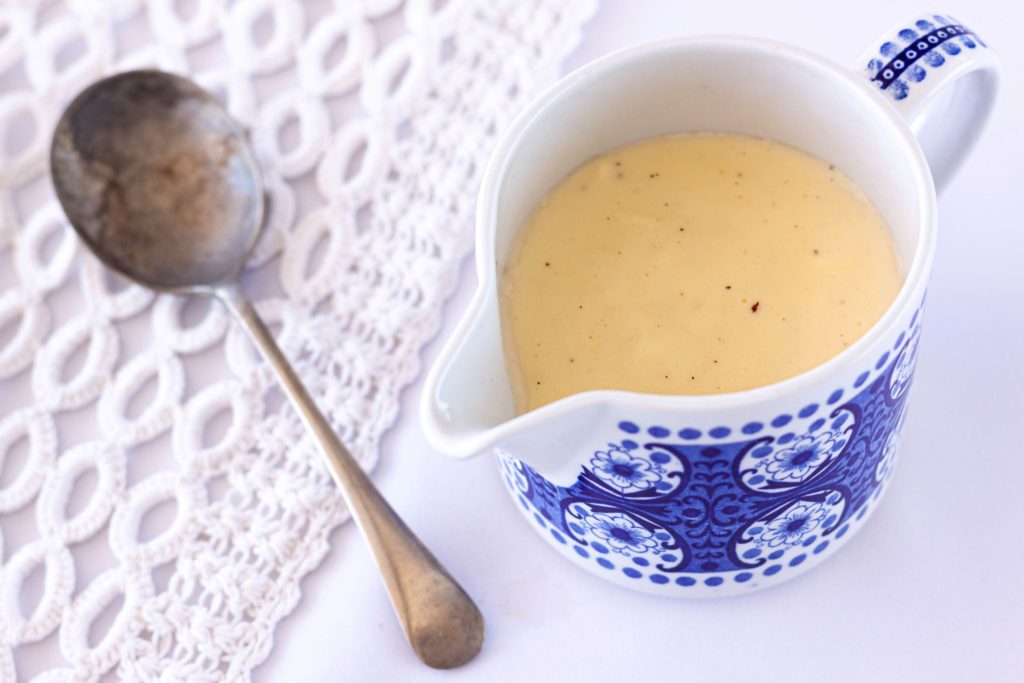
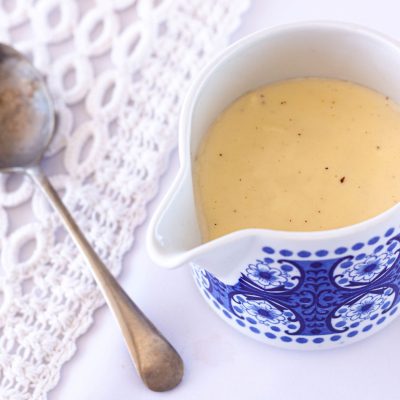

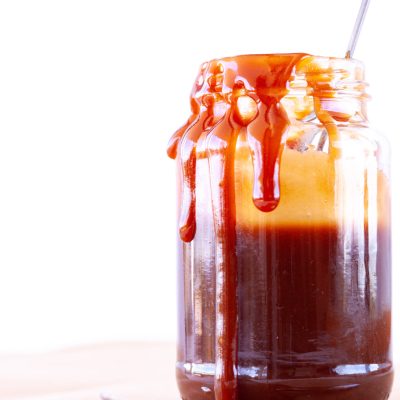

1 thought on “How to fix a white sauce”
What cause a white sauce to be lumpy?